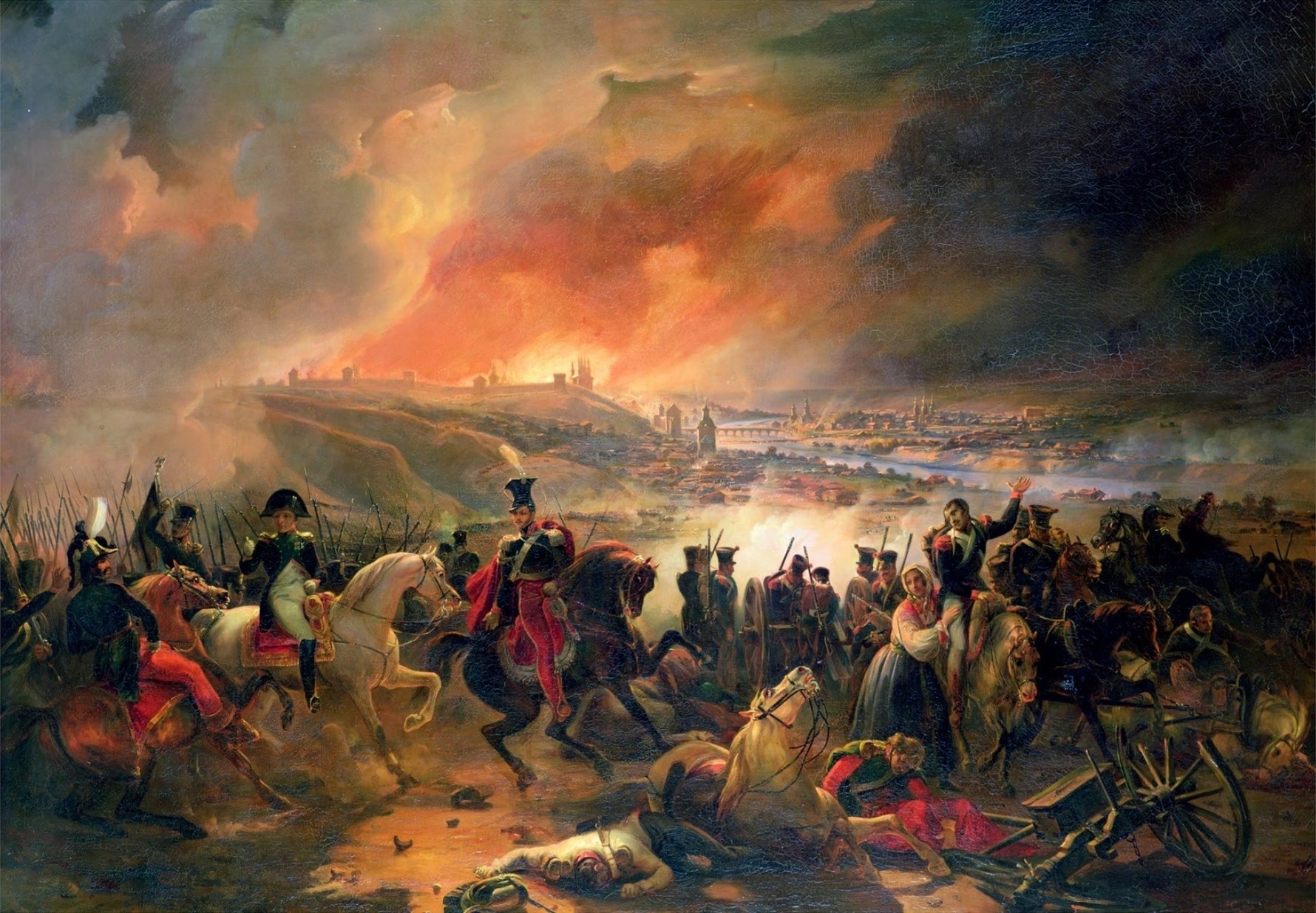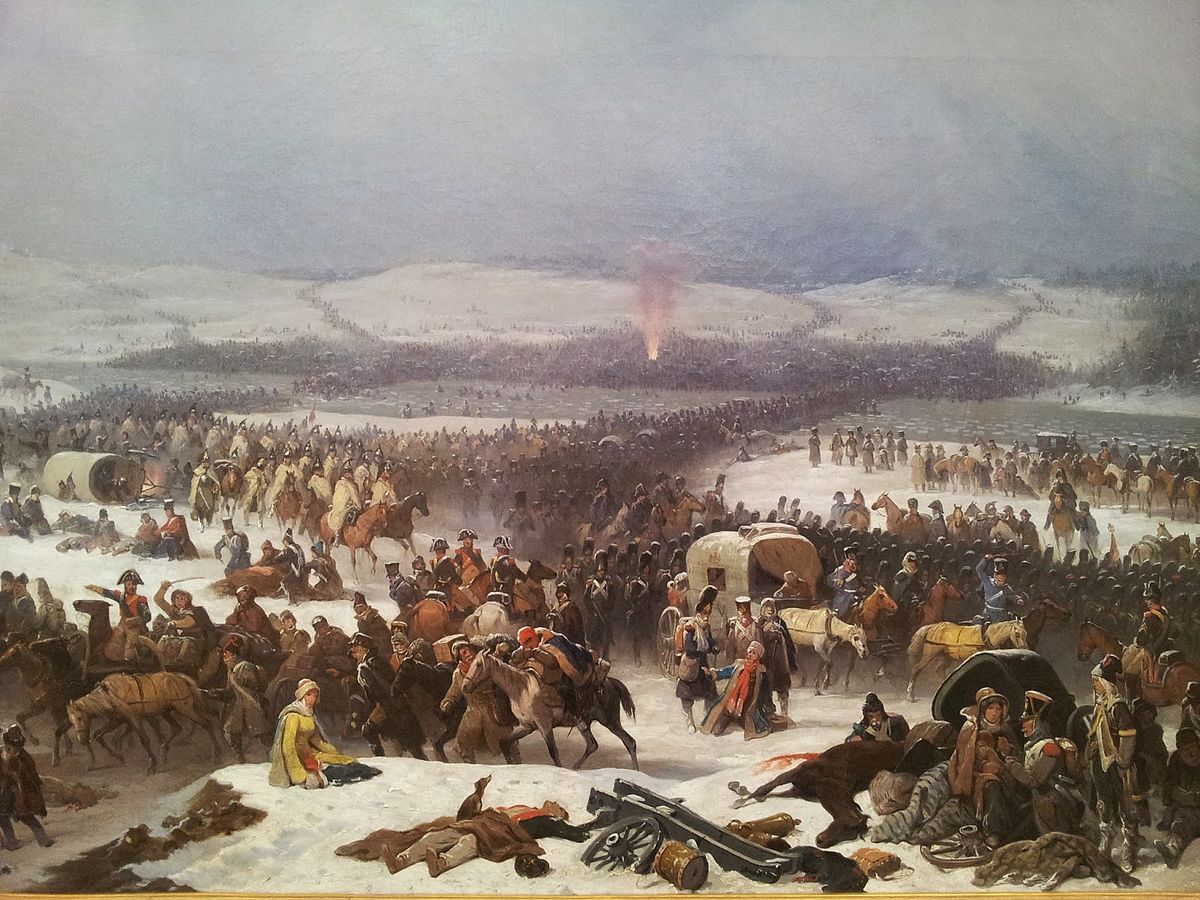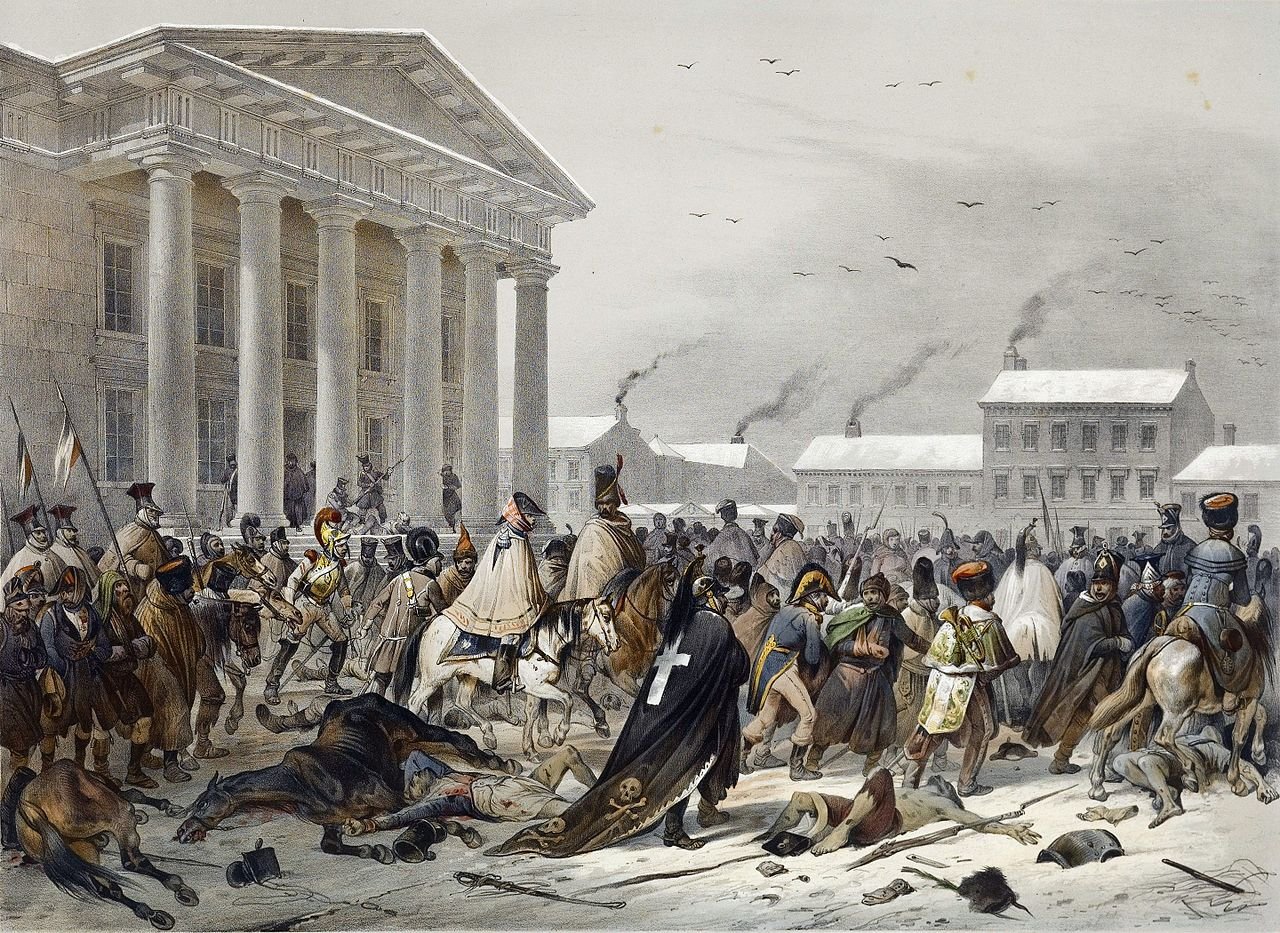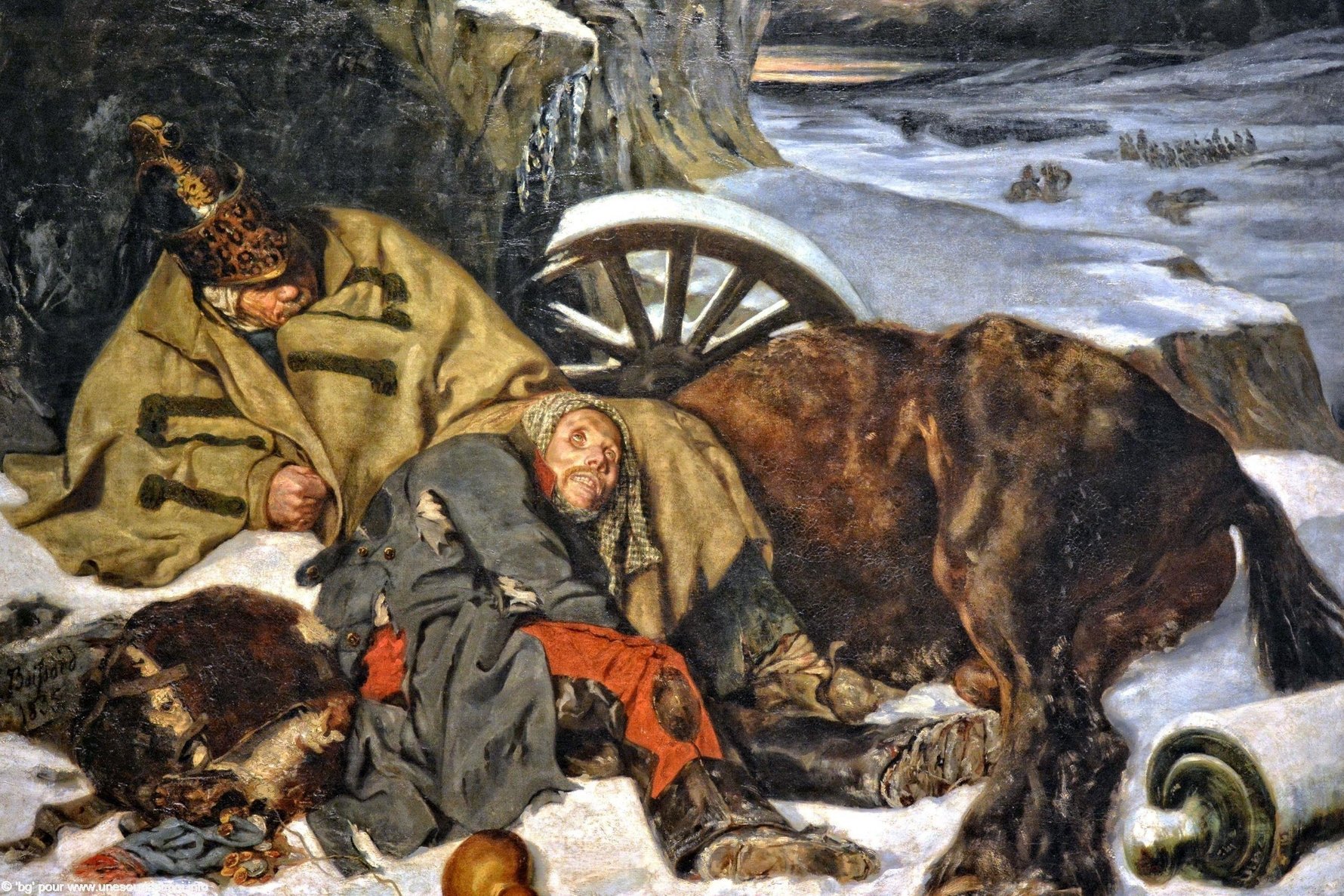The remains were carefully extracted, each body numbered and sent to a forensics team. It quickly became clear that these unfortunates had not been the victims of the KGB or the Nazis but were from a great calamity that had occurred 200 years before.
Of the 3269 bodies, the vast majority were male and most had been in their twenties when they died.
Typhus and tuberculosis were ruled out as major causes of death, nor did the bones reveal chronic long-term malnutrition. But around 80% had lesions indicating venereal disease. Many had severe injuries that had healed or were in process of healing. Others had broken bones in the feet and deformed vertebrae, indicative of excessive marching. But there were no signs of a massacre or combat, hinting that starvation and cold may have been the main cause of death.
However, it was the fragments of uniforms and regimental buttons that left no doubt that these sad remains dated from Napoleon’s doomed and tragic march on Moscow in 1812.
Hopes of conquest
In 1812, the French emperor assembled half a million men from countries across Europe into the biggest army the world had ever seen. His aim? To stop Russia from continuing to trade with his greatest enemy, Britain. The plan involved quickly luring the Russian Army into a decisive battle, to force Tsar Alexander I to join the pan-European economic blockade.
In June, morale was high as the endless trail of men, carts and artillery that formed the fearsome Grande Armée passed through towns and villages such as Vilkaviškis, Pilviškiai and Skriaudžiai, where Napoleon dined with the parish priest.
The army gathered on the southern bank of the River Nemunas near Kaunas, which then formed the border of the Russian Empire. Besides the French ranks were Prussians and Portuguese, Saxons and Swiss, Dutch and Italians, and countless other nationalities.
Poles and Lithuanians, hoping for the return of their own state which had been carved up between neighbouring empires barely 20 years before, had their own unit, the Vistula Legion. In total, the troops carried with them three weeks of rations, in wagons and on their backs.
The hill where Napoleon and his generals are said to have stood surveying the landscape across the river is today known as Napoleon’s Hill, a few kilometres south of Kaunas’ city centre, though it’s hard now to see much from its tree-covered summit. It took two days for the army to cross the river on three pontoon bridges. The invasion had begun. Just a fraction of this great army, numbed, battle-worn, starved and half-crazed, would return to this point six months later.

The battles begin
Napoleon anticipated a great battle somewhere close to Vilnius. But instead the Russians simply withdrew, falling back further and further east, stripping the land as they went. The first blow came from the weather. On the way to Vilna, after days of sweltering heat, an apocalyptic storm struck one night sending lightning bolts and torrential rain onto the terrified troops and bringing horrific losses as horses drowned in the quagmire that replaced the sandy roads. For the men it was a psychological blow and a bitter omen.
The Grande Armée entered Vilnius on June 28 and were welcomed as liberators. Napoleon took up residence where the tsar had been stationed less than two days previously, in what is now known as the Presidential Palace. The city became the temporary administrative capital of the French Empire, with ministers, foreign diplomats, merchants and army families all moving in.
After two weeks, Napoleon rejoined his men. Though continually harassed by murderous bands of Cossacks and peasants, the army faced its first real battle in Smolensk on August 16-17. After vicious hand-to-hand fighting amid heavy shelling, a full-scale bombardment by more than 200 French guns left the city a smoking ruin. Little thought was given to the inhabitants, thousands of who were engulfed in flame together with the Russian soldiers.
Then, at Borodino on September 7, an indecisive, bloody scramble left both sides with crippling losses. This was a fearsome battle, with one vast army pushing forwards, then the other, leaving masses of bodies sprawled on top of each other in contorted heaps. Eventually this was a French victory, though most units lost around 20 percent of their strength – up to 35,000 dead, wounded or captured. Losses on the Russian side were greater, around 45,000. Borodino was the biggest massacre in history, not matched until the Somme more than a century later.
When the Grande Armée reached Moscow on September 14, the emperor set up his quarters inside the walls of the Kremlin. The majority of the inhabitants left. Two days later the great city abruptly lit up – on fire. The Russian authorities had ordered arsonists to set it ablaze and within a few days most of the buildings were destroyed. Napoleon fled the flames and his entire army dissolved into an orgy of looting and drunken debauchery across the city. Eventually the emperor returned. Order was restored. Back in the Kremlin, he waited for the Russian side to negotiate peace. He waited. And waited.

The tragic retreat
The cold weather came early that year. Up until the first sudden sprinkle of snow on October 13, unusually fine weather had made Napoleon complacent. But now he realised his supply lines and units stationed at points west were looking very vulnerable. On October 20, he ordered the evacuation of the city. While some units, including the Poles and Lithuanians, properly shod their horses for the icy roads, the rest did not – even after a warning to the Emperor, who dismissed it. With carts and uniforms stuffed full of all the riches they could find pillaged from the houses of Moscow, the army of 100,000 departed.
The troops trod the same path, past the horrific battlefields of the campaign, harried by units of the Russian Army, bands of Cossacks – and, from late October, the extreme cold. Faces unprotected, lips cracking, eyes blinded, artillery and weapons steadily abandoned, horses collapsing, the men fell one by one by the roadside from exhaustion, were beaten and robbed by local villagers and froze to death. The Grande Armée had become a rabble.
The biggest disaster came at the icy River Berezina, where the only bridge had been destroyed and a massive Russian force waited on the other side. Incredibly, the trapped stragglers put up two rickety pontoon bridges across the freezing river to the north. Just 55,000 men – and women who had accompanied them on the campaign – managed to cross in late November, the continuous shelling by the Russians turning it into a chaotic and desperate stampede.
The return to Vilnius
But perhaps the biggest horrors occurred on the road to Vilna, a city so fondly remembered in the minds of the survivors for its warmth and bountiful food and drink. With this promise in mind, the remains of the army plodded on through a world of ice. Temperatures fell dramatically, to minus 30 or lower, and ears, noses, toes and fingers were blackened and lost to frostbite. Each night hundreds died. Horse carcasses froze quickly after death, so some of the men cut slivers of flesh off any of the beasts that were still walking, or sucked their blood. Whenever a horse fell, dead or dying, soldiers fought over its liver and heart. There were also incidents of cannibalism.

Just a few thousand reached Vilna, sacrificing their last drop of energy to get there. But most locals were too fearful to open their doors to such a delirious, crazed crowd of men, and the soldiers, collapsing by the snow-covered doorways, died instantly. Soon the frozen streets were covered in ragged corpses. Monasteries, churches and, a few kilometres north, Verkiai Palace became makeshift hospitals where the dead were simply cast out of the windows or left in piles in the corridors. Even at the narrow gates to the city, the sheer desperation to enter, knowing the bloodthirsty sword-wielding Cossacks were hot on their heels, brought stampedes as soldiers, carts and horses piled on top of each other.
The few who survived Napoleon’s campaign were the ones who, somehow, were able to keep going towards Kaunas and, finally, over the border away from the Russian empire. Napoleon himself had already abandoned his army, fleeing to Paris with barely a few hours in Vilnius. The rest of the rabble evacuated the city on December 10, leaving as the Cossacks poured into the eastern and southern gates. Where the road out of Vilna ascended a hill at Paneriai, men, horses and wagons struggled to get up the icy slope. They slid and fell, colliding with others into a heap at the bottom where Cossacks cut them to pieces and stole any valuables they could lay their hands on. Wiser survivors zigzagged up the hill through trees to the side.
Less than 20,000 of the Grande Armée crossed the Nemunas at Kovno that winter. Meanwhile, the people of Vilna tried to cremate the dead, the earth too hard to dig, drowning the city in a stench of burning flesh. The Russians captured, stripped and force-marched any lost enemy troops back eastwards where most quickly died. A few, too sick to move, were left for months in Vilnius’ churches and monasteries. It was from the need to bury the morass of bodies that eventually, probably in the spring of 1813, they were buried in an unmarked mass grave to the north of the city – to be discovered by mechanical diggers 200 years later.
Further reading
1812: Napoleon’s Fatal March on Moscow (2004), Adam Zamoyski
Vilnius 1812: From Beyond the Grave (2008), Paul Richardson






Comments